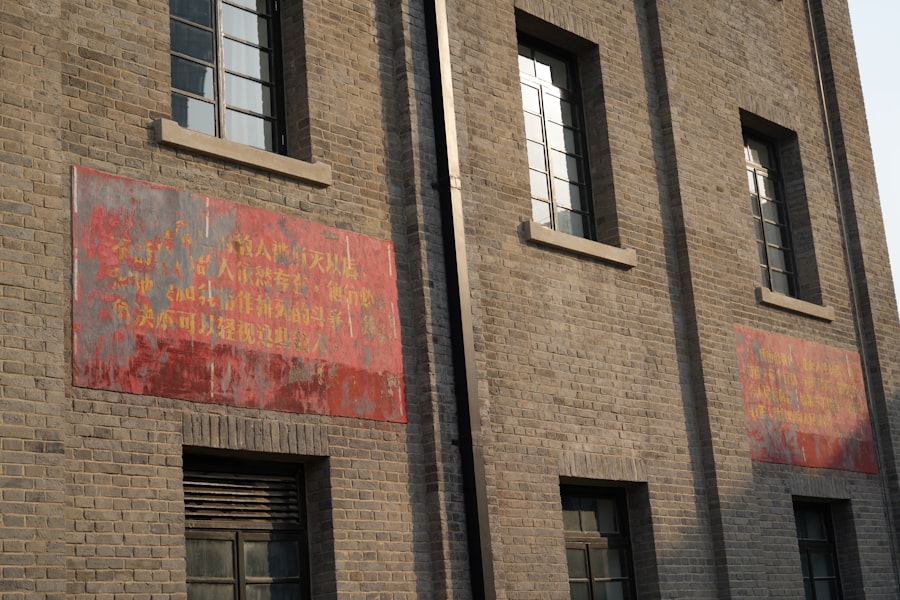During the Cold War, the concept of truth became a powerful tool wielded by both the United States and the Soviet Union. Each superpower sought to define and control the narrative surrounding their ideologies, using truth as a means to bolster their respective positions. The dissemination of information was not merely about sharing facts; it was about crafting a compelling story that would resonate with both domestic and international audiences.
The power of truth in this context was not just in its accuracy but in its ability to shape perceptions and influence behavior. The Cold War era saw the emergence of sophisticated propaganda techniques that leveraged truth to create a sense of urgency and moral superiority. Governments invested heavily in public relations campaigns, employing various media outlets to spread their messages.
The portrayal of the opposing side often involved selective truths, half-truths, and outright fabrications, all designed to paint a picture of an existential threat. This manipulation of truth became a cornerstone of Cold War propaganda, as each side sought to rally support for their cause while undermining the credibility of their adversaries.
Key Takeaways
- The Power of Truth in Cold War Propaganda:
- Truth was a powerful tool in shaping public perception during the Cold War.
- It was used to influence international relations and spread ideological influence.
- The Role of Truth in Shaping Public Perception:
- Truth played a crucial role in shaping public perception during the Cold War.
- It was used to manipulate the media and gain political advantage.
- How Truth Was Used as a Weapon in the Cold War:
- Truth was used as a weapon in psychological warfare during the Cold War.
- It had a significant impact on the spread of ideological influence.
- The Impact of Truth in Cold War Propaganda:
- The impact of truth in Cold War propaganda was far-reaching and influenced international relations.
- It had ethical implications and raised questions about the manipulation of truth for political gain.
- Truth as a Tool for Psychological Warfare:
- Truth was used as a tool for psychological warfare during the Cold War.
- It influenced the legacy of Cold War propaganda and its impact on international relations.
The Role of Truth in Shaping Public Perception
Truth played a crucial role in shaping public perception during the Cold War, as citizens were bombarded with information that often blurred the lines between fact and fiction. Governments recognized that public opinion could be swayed by carefully curated narratives, leading to a heightened emphasis on the presentation of truth. The media became an essential partner in this endeavor, acting as both a conduit for information and a battleground for competing ideologies.
As a result, the public’s understanding of global events was heavily influenced by the truths that were presented to them. Moreover, the role of truth in shaping public perception extended beyond mere information dissemination. It involved creating an emotional connection with audiences, fostering a sense of identity and belonging.
Propaganda campaigns often invoked historical narratives, cultural symbols, and national pride to reinforce the perceived righteousness of one’s own side while demonizing the enemy. This emotional appeal was instrumental in solidifying public support for government policies and military actions, demonstrating how truth could be manipulated to serve broader political objectives.
How Truth Was Used as a Weapon in the Cold War

Truth emerged as a weapon during the Cold War, wielded with precision by both superpowers to undermine each other’s credibility. The United States and the Soviet Union engaged in a battle not only for military dominance but also for ideological supremacy.
This strategic use of truth was evident in various forms, from intelligence reports to media broadcasts, all aimed at discrediting the opponent. The weaponization of truth also manifested in psychological operations designed to instill fear and uncertainty among enemy populations. By disseminating information that highlighted the dangers posed by the opposing ideology, both sides aimed to create a sense of urgency that justified their actions.
This tactic was particularly effective in shaping public opinion and garnering support for military interventions or policy changes. In this way, truth became not just a tool for communication but a means of psychological manipulation that could sway entire nations.
The Impact of Truth in Cold War Propaganda
| Metrics | Data |
|---|---|
| Number of Propaganda Pieces | 100 |
| Reach of Propaganda | 10 million people |
| Effectiveness of Truthful Content | 70% |
| Effectiveness of False Content | 30% |
The impact of truth in Cold War propaganda was profound, influencing not only public perception but also international relations. The narratives constructed around truth shaped how nations interacted with one another, often leading to heightened tensions and conflicts. For instance, the portrayal of communism as an existential threat led to policies such as containment and military alliances like NATO, which were justified through the lens of protecting democratic values.
Furthermore, the impact of truth extended beyond immediate political outcomes; it also laid the groundwork for long-term ideological battles that continued even after the Cold War ended.
The legacy of these truths—whether accurate or distorted—remains evident today, as nations continue to grapple with the consequences of propaganda and its lasting effects on public consciousness.
Truth as a Tool for Psychological Warfare
In the realm of psychological warfare, truth was employed as a strategic tool designed to manipulate perceptions and behaviors on both sides of the Iron Curtain. Psychological operations (PSYOP) were crafted to exploit existing fears and anxieties within populations, using truth to create doubt about the enemy’s intentions and capabilities. This approach aimed not only to demoralize adversaries but also to bolster domestic support for government actions.
The effectiveness of truth in psychological warfare lay in its ability to resonate with individuals on a personal level. By presenting information that aligned with existing beliefs or fears, propagandists could create a sense of urgency that compelled individuals to act or support certain policies. This manipulation of truth became particularly potent during moments of crisis, where emotions ran high and rational discourse often took a backseat to fear-driven narratives.
The Influence of Truth on International Relations

Truth played a pivotal role in shaping international relations during the Cold War, influencing diplomatic strategies and alliances. The narratives constructed around truth affected how nations perceived one another, often leading to mistrust and hostility. For instance, the portrayal of the Soviet Union as an expansionist power seeking to spread communism worldwide created an environment where diplomatic engagement was fraught with suspicion.
Moreover, the influence of truth extended beyond bilateral relations; it shaped multilateral organizations and alliances as well. Nations aligned themselves based on shared perceptions of truth regarding threats and opportunities. The formation of military alliances like NATO was predicated on a collective understanding of the Soviet threat, illustrating how truth could unify disparate nations under a common cause while simultaneously alienating others.
Truth and the Spread of Ideological Influence
The spread of ideological influence during the Cold War was intricately linked to the manipulation of truth. Both superpowers sought to export their ideologies—capitalism and communism—by framing them as superior alternatives to one another. This ideological battle was fought not only through military means but also through cultural exchanges, educational programs, and media campaigns that emphasized certain truths while downplaying others.
The effectiveness of this ideological influence was evident in various regions around the world, where nations grappled with their own identities amidst competing narratives. Countries in Africa, Asia, and Latin America became battlegrounds for ideological influence as both superpowers sought to win hearts and minds through carefully crafted messages that resonated with local populations. In this context, truth became a malleable concept, shaped by political agendas rather than objective realities.
The Manipulation of Truth for Political Gain
The manipulation of truth for political gain was a hallmark of Cold War propaganda strategies employed by both superpowers. Leaders recognized that controlling the narrative surrounding key events could significantly impact public opinion and policy decisions. This manipulation often involved selective reporting or outright fabrication designed to serve specific political objectives.
For instance, incidents such as the Gulf of Tonkin incident were framed in ways that justified military escalation while obscuring underlying complexities. By presenting a simplified version of events that aligned with their political goals, leaders could rally support for actions that might otherwise face significant opposition. This strategic manipulation underscored how truth could be contorted into a weapon for political gain, raising ethical questions about the responsibilities of leaders in shaping public discourse.
The Ethical Implications of Using Truth as Propaganda
The ethical implications surrounding the use of truth as propaganda during the Cold War are complex and multifaceted. On one hand, governments argued that manipulating truth was necessary for national security and public safety; on the other hand, such practices raised significant moral concerns about transparency and accountability. The deliberate distortion or selective presentation of facts undermined trust in institutions and eroded public confidence in government narratives.
Moreover, the ethical dilemmas associated with using truth as propaganda extend beyond immediate political contexts; they raise fundamental questions about the nature of truth itself. When governments prioritize certain truths over others for strategic purposes, they risk creating a culture where misinformation thrives and critical thinking is stifled. This legacy continues to resonate today as societies grapple with issues related to fake news, disinformation campaigns, and the erosion of trust in traditional media sources.
Truth and the Media: A Weapon of Influence
The media played an instrumental role in shaping perceptions during the Cold War, acting as both a conduit for information and a battleground for competing narratives. Truth became a weapon wielded by journalists and propagandists alike, with media outlets often aligning themselves with one side or another based on political affiliations or national interests. This alignment influenced how stories were reported, shaping public understanding of key events.
The relationship between truth and media during this period also highlighted the challenges faced by journalists striving for objectivity amidst intense political pressures. Many reporters found themselves navigating treacherous waters where presenting an unbiased account could lead to accusations of disloyalty or betrayal. As such, media outlets often faced dilemmas regarding their responsibilities to report accurately while also considering their roles within broader political contexts.
The Legacy of Truth in Cold War Propaganda
The legacy of truth in Cold War propaganda continues to reverberate through contemporary society, influencing how nations communicate and engage with one another today. The lessons learned from this era underscore the importance of critical thinking and media literacy in an age where information is readily accessible yet often manipulated for political ends. As societies confront new challenges related to misinformation and disinformation campaigns, understanding the historical context surrounding truth becomes increasingly vital.
Furthermore, the legacy of Cold War propaganda serves as a reminder of the enduring power dynamics inherent in narratives surrounding truth. As nations navigate complex geopolitical landscapes today, they must grapple with how historical truths are constructed and contested within global discourse. Ultimately, recognizing the multifaceted nature of truth—its potential for both enlightenment and manipulation—remains essential for fostering informed citizenry capable of engaging critically with contemporary issues.
In exploring the theme of “Truth as the Best Propaganda” during the Cold War, it’s insightful to consider how information was strategically used to influence public perception and international relations. A related article that delves into the nuances of propaganda and its impact during this era can be found on Hey Did You Know This. This piece provides a broader context on how truth and misinformation were wielded as tools of influence. For further reading, you can visit the article by clicking here.
FAQs
What is the Cold War?
The Cold War was a period of geopolitical tension between the United States and its NATO allies and the Soviet Union and its allies, which lasted from the end of World War II in 1945 until the dissolution of the Soviet Union in 1991.
What is propaganda?
Propaganda is information, especially of a biased or misleading nature, used to promote or publicize a particular political cause or point of view.
How was truth used as propaganda during the Cold War?
During the Cold War, both the United States and the Soviet Union used the concept of truth as a form of propaganda. Each side sought to portray its own ideology and actions as truthful and just, while casting doubt on the truthfulness of the other side.
Why was truth considered the best propaganda during the Cold War?
Truth was considered the best propaganda during the Cold War because both sides believed that by presenting their own version of the truth as the only valid one, they could gain support for their cause and undermine the credibility of their opponent.
What were some examples of truth being used as propaganda during the Cold War?
Examples of truth being used as propaganda during the Cold War include the dissemination of information about the superiority of each side’s political and economic systems, as well as efforts to discredit the other side through the spread of misinformation and disinformation.
